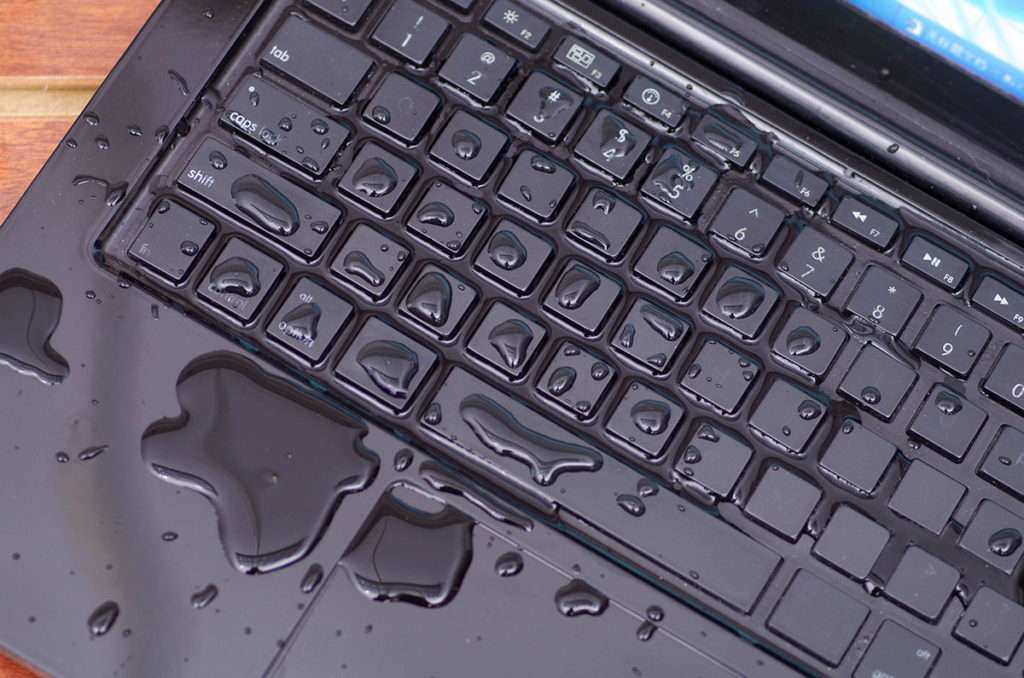Dealing With Laptop Water Damage: A Comprehensive Guide
Introduction
Water and electronic devices like laptops don't mix. A little spill can lead to frustrating issues, from malfunctioning keyboards to complete system failure. While laptop water damage is a common problem, proper handling can be the key to minimizing losses. This comprehensive guide provides insights to help you navigate through such an incident, armed with knowledge on what to do immediately after an unwanted spill, and how to handle your water-damaged laptop.
What's the First Response After Spilling Water on Your Laptop?
A quick and calculated response post a laptop water spill can notably lessen the potential harm. Following the subsequent steps can aid in expedited damage control:
1. Switch Off & Disconnect: The foremost thing to do is power off your laptop instantly and separate it from any power source. This action decreases the risk of short-circuiting, which can lead to more serious issues.
2. Detach Additional Devices: Remove every peripheral device connected to your laptop. This includes memory cards, USB devices, docking stations, and if feasible, the battery.
3. Drainage Technique: Position your laptop upside down to let the excess water drain out. However, avoid aggressive shaking to prevent the water from seeping into unharmed components.
4. Refrain from Powering On: Avoid the urge to power on your laptop to check its functionality. The same applies to using a hairdryer or any extreme heat source to dry it out, as high temperatures can cause irreversible damage.
In a nutshell, these immediate steps post a water spill, if performed swiftly and carefully, can be lifesavers for your laptop. It's a delicate process that requires patience, as trying to fast-forward the process may prove detrimental.
How to Safely Disassemble Your Laptop?
If your laptop encounters water damage, safe disassembly can be crucial. It's important to note that this process requires a certain degree of technical knowledge and comfort. If you're unsure, it's best to consult a professional. Those confident enough can follow the steps below for safe disassembly to prevent further damage:
1. Remove the Battery: The first step is to remove the laptop battery, assuming it's easily removable. This can be a significant step in drastically reducing the chance of a short circuit.
2. Unscrew the Base: Using the correct-sized screwdriver, start removing the screws from the base of your laptop. Remember to keep track of each screw and where it came from to ensure easy reassembly.
3. Detach the Keyboard and Trackpad: Proceed to disconnect the keyboard and trackpad. Be extra vigilant to avoid damaging the cable connections.
4. Remove the Hard Drive and Memory: Carefully take out the hard drive and memory cards, treating them with care due to their sensitive nature.
5. Disconnect the Motherboard: The motherboard is often the last part to be removed. The utmost care is necessary during this step due to the importance and fragility of this component.
Remember, if any of these steps seem overwhelming or risky, it's recommended to take the laptop to a qualified professional. Your device's safety is paramount, and it's always better to be safe than sorry.

How Can You Efficiently Clean and Dry Your Water-Damaged Laptop?
Cleaning and drying your water-damaged laptop efficiently is possible with the right approach. Here are the essential steps you need to take after the unfortunate spill to maximize your chances of saving your device:
- Start with Blotting: Carefully clean the visible water off the laptop's surface using a lint-free cloth or paper towel. Blot gently to absorb the liquid, making sure not to rub or push harder as it may spread the water, causing more harm than good.
- Use a Cotton Swab: For those hard-to-reach areas, a cotton swab can be lifesaver. It can absorb the water from the corners or tiny spaces where a towel or cloth can't reach.
- Utilize Isopropyl Alcohol: Cleaning your water-damaged laptop isn't complete without isopropyl alcohol. It is excellent for removing stubborn mineral deposits that water leaves behind, and it aids in speeding up evaporation. Simply dip a cotton swab in the alcohol and gently clean the areas where you see visible water stains or drops.
- Let it Air Dry: The next crucial step is to let your laptop parts air dry. It should be placed in a warm, dry area, devoid of moisture. This process requires patience, as it is recommended that you let the parts dry for at least 24 to 48 hours.
- Speed up Drying with Fan: You can enhance the drying process by using a small fan to blow air across the damp parts. This accelerates the evaporation, ensuring your laptop parts dry faster. Avoid heating tools like a hairdryer, as excessive heat can damage the electronic components.
Remember that every spill scenario is unique, and not all methods may apply. However, the described steps can provide a general guide to help you efficiently clean and dry your water-damaged laptop.
When Should You Seek Professional Help for Laptop Water Damage?
Often, minor spills that haven't infiltrated deeper layers of your laptop hardware can be managed at home with appropriate handling. However, there are certain scenarios where professional help should be sought to prevent further complications. Let's consider when it's advisable to reach out to professionals.
- Severe Water Damage: If your laptop was exposed to a large amount of water, like a full cup spilled directly onto the keyboard, expert care is needed. Such incidents have a higher propensity of affecting critical internal hardware components.
- Laptop was Powered During Spill: If the mishap occurred when the laptop was powered on, there's a significant risk of short-circuits which can lead to irreparable damage. It'd be crucial to consult a technician who can thoroughly check your device.
- Presence of Critical Data: If your laptop contains sensitive or important data, DIY attempts might be too risky. Any mistake could potentially lead to data loss, making professional intervention a wiser choice.
- Unfamiliarity with Laptop Disassembly: Disassembling a laptop requires technical prowess to avoid causing more harm. If you're not well-acquainted with the process, you should certainly opt for professional help.
As per the "Global Laptop Insurance Market" report, a 22% rise in laptop insurance claims was witnessed between 2019 and 2020, mainly due to damage from liquid spillage. This rise reinforces the need for seasoned professionals in laptop repair services after liquid damage events.
Remember, professional technicians not only have the right set of tools but also have the required expertise to mitigate water damage to your laptop effectively. Their intervention can save you from potential data loss and further hardware damage. If your laptop is under warranty, it's ideal to immediately get in touch with your manufacturer or an authorized service center.
Thus, while it might seem cost-effective to handle water damage repair on your own, there are situations where professional assistance becomes an absolute necessity. Determining which route to take depends largely on the severity of the spill, your technical knowledge, and the criticality of stored data in the laptop.
What Precautionary Measures Can Prevent Laptop Water Damage?
Ensuring the safety of your laptop from water damage is a proactive process. Here are some effective strategies for safeguarding your device:
1. Keep Liquids at a Safe Distance: Avoid placing drinks or other liquids near your laptop. A sudden spill can swiftly turn into a catastrophe for your device. Create a no-liquid zone around your work station as the first line of defense against water damage.
2. Elevate Your Laptop: Implement the use of a laptop stand to lift your device off the surface level. This can help reduce the risk considerably as any spilled liquid on the surface will be less likely to reach your laptop.
3. Utilize Peripheral Devices: While working, consider using external keyboards and mice. If a liquid spill occurs, these peripherals can act as your first line of defense while leaving your main laptop hardware unscathed.
4. Invest in Protective Gear: Laptop skins and waterproof laptop covers can provide an additional layer of protection. These protective gears are designed to be resistant to water, acting as an effective shield against any accidental spills.
5. Back up Data Regularly: Although the above measures reduce the risk of water damage, accidents can still happen. To safeguard your valuable data, it is crucial to regularly back up important files to an external hard drive or a cloud service.
By maintaining these precautionary habits, you can significantly reduce the chances of laptop water damage, ensuring a longer and safer lifespan for your device.
Conclusion
Laptop water damage can be a challenging event. However, quick reactions, careful disassembly, meticulous cleaning, and drying can save your laptop from permanent damage. In some cases, professional help might be necessary but following these preventive measures can save you from future accidents.
Related FAQs about what to do if you spill water on laptop
Can a laptop recover from water damage?
Yes, a laptop can recover from water damage, depending on the severity of the incident and immediate steps taken post spillage. Swiftly powering off the device, removing external devices and battery, and allowing it to dry thoroughly often facilitates recovery. However, professional assistance may be needed for severe damages.
How long should I let my laptop dry before turning it on?
It is advised to let your laptop air dry for at least 24 to 48 hours before attempting to turn it on. This duration ensures that all hidden moisture evaporates thoroughly from internal components, helping prevent short circuits and other related issues.
Are there specific parts more susceptible to damage during a water spill?
Yes, parts like the motherboard, hard drive, and keyboard are highly susceptible to water damage. Water can cause short circuits in the motherboard, corrupt the hard drive, and cause sticky or non-responsive keyboard keys. Hence, timely and appropriate actions post a spell are critical.


